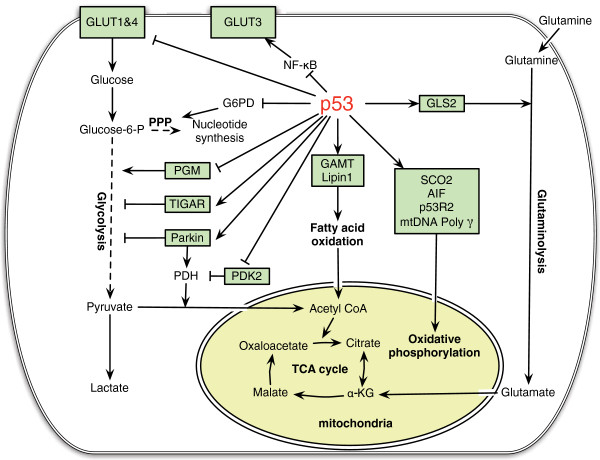Figure 1.
The regulation of cellular metabolism by p53. p53 regulates mitochondrial oxidative phosphorylation, glycolysis, glutaminolysis and fatty acid oxidation in cells. p53 transcriptionally induces SCO2, AIF and p53R2, and physically interacts with mtDNA Poly γ to maintain the mitochondrial integrity and promotes oxidative phosphorylation. p53 reduces glucose uptake through direct repression of the transcription of GLUT 1 & 4, and indirect repression of the expression of GLUT 3. p53 negatively regulates PGM at the protein level and transcriptionally induces TIGAR and Parkin to inhibit glycolysis. Parkin positively regulates PDH, which converts pyruvate into acetyl-CoA. p53 negatively regulates the expression of PDK2, which phosphorylates and inhibits the PDH activity. p53 induces the expression of GLS2, which catalyzes the hydrolysis of glutamine to glutamate. The latter can be further converted into α-KG (α-ketoglutarate). By increasing the levels of α-KG, GLS2 promotes TCA cycle and oxidative phosphorylation. p53 physically interacts with G6PD to negatively regulate the activity of G6PD, and thereby down-regulates PPP (pentose phosphate pathway), a pathway critical for nucleotide synthesis and NADPH production. p53 induces the expression of GAMT and Lipin1 to promote fatty acid oxidation. By producing acetyl-CoA, fatty acid oxidation contributes to the maintenance of TCA cycle and mitochondrial oxidative phosphorylation.

